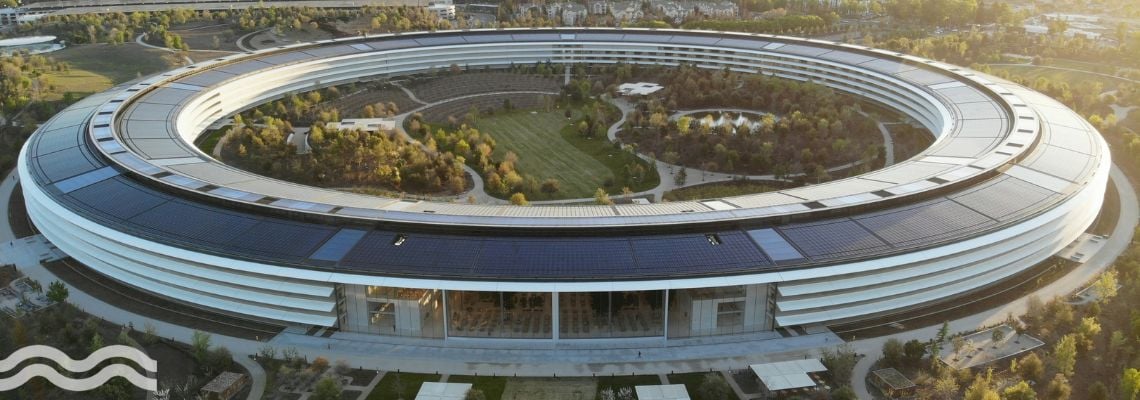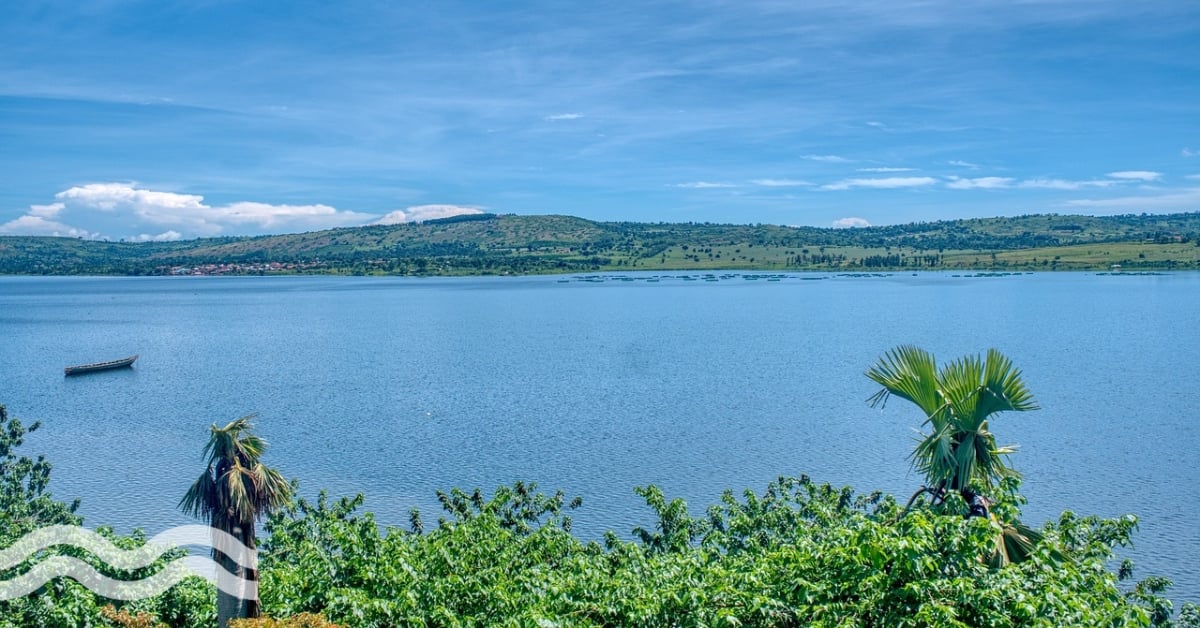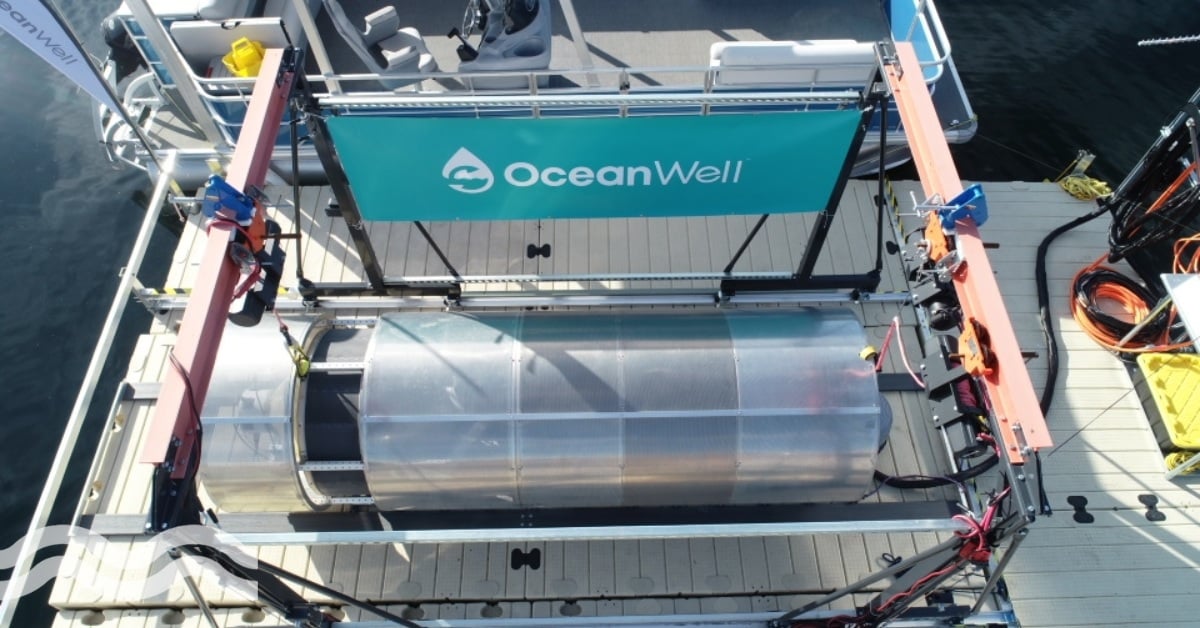Apple puts water replenishment at heart of global strategy

‘Think different, but not too differently’, this was Forbes’ reaction to the decision by global tech superpower Apple to re-use its iconic 1997 slogan (Think different) in 2021.
The same might be said for Apple’s updated water strategy. Not so much a revolution in corporate policy, but instead a refresh of its existing plan that itself forms part of a wider environmental strategy that feeds into its carbon-neutral Apple 2030 plan.
There a three main pillars to Apple’s environment plans: climate change; resources; smarter chemistry. Water sits under the resources pillar, alongside materials and zero waste. The update to its water strategy was announced alongside plans to become carbon neutral across all the company’s value chains by 2030.
Ambitious water strategies for the future

“Clean energy and water are foundational to healthy communities and essential building blocks for a responsible business,” said Lisa Jackson, Apple’s vice president of environment, policy, and social initiatives. “We’re racing toward our ambitious Apple 2030 climate goal while taking on the long-term work to transform electrical grids and restore watersheds to build a cleaner future for all.”
As part of these plans, the company has set the ambitious target of replenishing 100 per cent of all fresh water used in its ‘corporate operations in high-stress locations’. The company has identified that 70 per cent of its ‘corporate water use occurs in areas with high or extreme basin stress, and that the majority of our water-related impact is in the manufacturing supply chain’.
Clean energy and water are foundational to healthy communities and essential building blocks for a responsible business.
To achieve its aims, the company has pledged to launch new partnerships that will deliver ‘nearly 7 billion gallons in water benefits’ over the next 20 years, including a commitment to clean water across its supply chain. To do this, Apple has committed to a wide range of initiatives that include restoring aquifers, floodplains and rivers, to funding access to drinking water and rainwater capture.
The company’s Environmental Progress Report 2024 gives the following updates on its water targets:
• Replenish all our corporate freshwater withdrawals in high-stress locations by 2030: Project ongoing; highlights include partnering on freshwater replenishment projects resulting in 31.2 million gallons of volumetric water benefits.
• Certify all Apple-owned data centres to the Alliance for Water Stewardship (AWS) Standard by 2025: Project ongoing; so far Apple has certified five data centres since 2021, and 20 suppliers since 2017 to the AWS Standard.
• Expand and grow supplier participation in the Supplier Clean Water Program, prioritizing high water stress locations and driving participants to an average 50 percent water reuse rate by 2030: this is a new target, but through its own program, Apple has supported an average 42 per cent reuse rate across 242 participating supplier facilities.
Despite the updated strategy and Environmental Progress Reports, Apple has failed to disclose its water usage to CDP, the global environmental disclosure system, for 14 years.
Patricia Calderon, global head of Water at CDP, said: “For the last 14 years, Apple has declined to disclose to CDP on water, even though they are classified as having ‘very high’ impact on water resources. This information is key to assess their commitments.”
Water security and resilient using nature-based solutions

Apple’s strategy recognises that water impacts are felt locally and is forming partnerships and collaborations to address community water needs. It is doing this by helping to restore ecosystems and improve the resilience of watersheds in high-stress areas in which the company operates, such as Northern and Southern California, Arizona’s Colorado River Basin, and the Indian states of Telangana and Maharashtra.
Since 2023, the company has committed almost €7.5 million to replenishing fresh water in these high-stress watersheds. It expects to deliver almost 7 billion gallons of water benefits over the next two decades.
Water strategy expert Will Sarni, founder and CEO of Water Foundry, told Aquatech Online: “It is encouraging to see Apple tap into its supply chain to deliver on the transition to renewable energy and contribute to building and sustaining healthy watersheds.”
He added: “It is critical to keep in mind that these issues overlap - renewables have a low or nearly no water footprint and as a result contribute to healthy watersheds. Also, it appears that Apple has resisted framing water as a ‘net zero’ strategy and instead has clarity on nature-based solutions as part of a healthy watershed strategy.”
Renewables have a low or nearly no water footprint and as a result contribute to healthy watersheds
The Environment Progress Report 2024 gives more information about Apple’s relationship with water and why it prioritises stewardship.
“Water is a local resource, so our strategy is context based and respectful of local conditions where we and our suppliers operate. We collect and analyse data and site-level feedback to make sure we understand our water impacts.
The report added: “We use tools like the World Resources Institute (WRI) Aqueduct Water Risk Atlas to gain insights on local watershed health, such as baseline water stress. We’ve developed a water footprint to understand how we use water across our value chain - in our own operations, our services, and our manufacturing supply chain.”
In Northern California, Apple is working with River Partners to restore 750 acres of floodplain, where three rivers meet. It is the largest confluence in the state and an important site for salmon making their way to the ocean. The project will involve planting hundreds of thousands of native plants.
We’ve developed a water footprint to understand how we use water across our value chain.
Once restored the floodplain will help to recharge local aquifers and make the whole area more resistant to flooding. Apple expects the project to leverage approximately five billion gallons of freshwater benefits over 20 years.
The company is working with the Salt River Project near its Mesa data centre, located in the greater Phoenix area on a 10-year plan to thin forests in the Colorado River Basin. The thinning project will help to protect approximately 30,000 acres of forest that is at severe risk of wildfire.
Forest fires can devastate the local watershed, and so cutting the risks will also protect the reservoir located upstream, which supports local communities, helping to deliver an estimated 2 billion gallons of water benefits to the area.
In 2023, the company achieved its target of 100 per cent water replenishment at its corporate operations sites across India, working in partnership with Uptime Catalyst Facility. These are just some of the company’s recent water-based projects in progress that are helping the company to meet its targets.
Achieving stewardship standards
As part of its water commitments, Apple has committed to achieving water stewardship standards across its businesses and supply chain.
In 2021, the company’s Apple’s data centre in Prineville, Oregon, became the first-ever to be certified to the Alliance for Water Stewardship (AWS) International Water Stewardship Standard.
Since then, Apple has certified four additional data centres to the AWS standard and has supported 20 of its supplier sites in achieving certification. More recently, seven supplier sites in southern India and over 20 supplier sites near Shanghai and Suzhou in China have participated in AWS training.
How much water does Apple use and where does it come from?
According to its Environmental Progress Report, the company used 1.6 billion gallons of water across all its corporate facilities during the 2023 fiscal year, an increase from the 1.5 billion gallons reported in 2022 and 1.4 billion gallons reported in 2021. These facilities include data centres, retail stores, distribution centres and corporate offices.
In 2023, 88 per cent of this was freshwater, defined as drinking quality water, sourced from municipal sites. Of this total, the company states that less than 5 per cent was sourced from groundwater, this was a saving compared to the 90 per cent reported in 2022.
A total of 8 per cent came from recycled water sources, with the majority from municipal treatment plants (down from 9 per cent in 2022). This is used for irrigation, cooling systems, and toilet flushing.
A ‘holistic, enterprise-wide approach that addresses water availability, quality, and equity’
Approximately 3 per cent came from rainwater harvesting and recovery of condensate for onsite use, this shows a marked improvement from the less than 1 per cent reported in 2022. Rainwater capture systems were used to source 9 million gallons of water at locations in Texas, North Carolina, Ireland, Taiwan, and Japan.
In the Santa Clara Valley and Austin, 2.6 million gallons of condensate was captured last year. While at Apple Park, a new blending tank project has led to the replacement of up to 18 million gallons (an estimated annual saving) of potable water with recycled water.
Apple’s strategy is based on low-water design
Apple’s water strategy has five pillars that are described in the Environmental Progress Report as forming a ‘holistic, enterprise-wide approach that addresses water availability, quality, and equity’, one that is grounded in understanding local conditions in the watersheds in which the company operates:
• Low-water design: Minimise water impacts in the design of products, services and sites.
• Site efficiency and conservation: Improve the performance of existing sites and processes.
• Site water stewardship: Demonstrate responsibility beyond our facilities through watershed level management.
• Replenishment and nature-based solutions: Improve water availability, quality, and access through regenerative approaches.
• Leadership and advocacy: Advance water management through policy, advocacy, and
• technology innovation.


